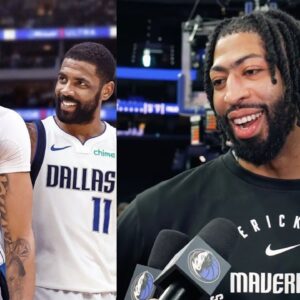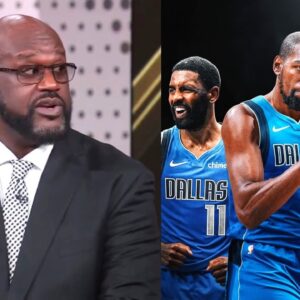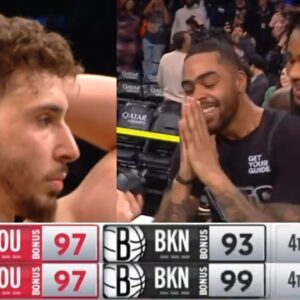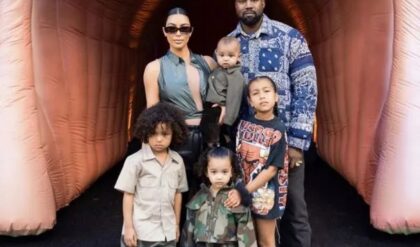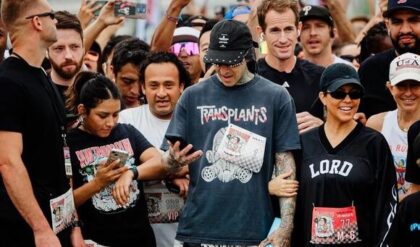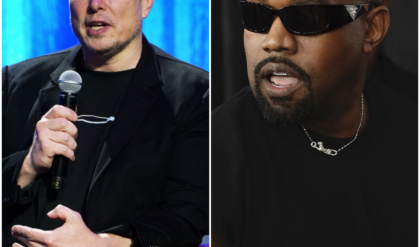The realities of being a second-apron luxury-tax team in the NBA are harsh. Building out a roster becomes increasingly difficult, especially when trying to make moves on the trade market.
As such, expensively constructed rosters must rely on their scouting departments and developmental coaches to ensure a steady supply of young, cost-controlled talent who can contribute on the court. The Boston Celtics are one example of that.
Since moving into a front-office position, Brad Stevens has placed a significant onus on creating a pipeline between the Maine Celtics and the Boston Celtics. That pipeline allows Boston to acquire late draft picks, young journeymen or undrafted talent, educate them within its system and potentially elevate them onto the NBA roster. Sam Hauser, Neemias Queta and Jordan Walsh are all prime examples of Boston’s pipeline system at work.
During the summer, the Celtics selected Baylor Scheierman with the 30th pick in the draft. Scheierman projects to be a high-level catch-and-shoot threat. However, his skill set fits more into the mold of a point-forward than it does a sharpshooter. Nevertheless, the young wing has joined arguably the best roster in the NBA and has looked incredibly raw in his limited minutes.
That’s why Scheierman is spending his rookie season getting an education in the G League. He’s learning how the Celtics want him to play while being in a position to receive countless reps in an expanded role.
On Friday, Scheierman produced his best performance of the season against the Wisconsin Herd. He scored 23 points, dropped six rebounds and hit five threes while converting at a 50% clip from the field. And while life in the NBA is going to be far more difficult, these highlight outings will help create a platform for him to fight for a roster spot next season.
Scheierman is the type of wing Joe Mazzulla and Stevens appear to love. He’s a high-IQ player who can hold his own on defense and create havoc on the glass. He’s also a reliable perimeter threat. With Drew Peterson and Walsh both fighting for a role this season, there’s a clear pathway for the rookie forward in the coming years.
More importantly, though, is that same pathway will likely entice other young talent to seek out the Celtics. As of right now, their developmental system is among the best in the NBA. That holds value, especially when the team can’t make roster moves on the trade market or add talent in free agency.
Stevens has set Boston up for consistent success, both now and in the future when it ultimately begins to rebuild. It’s no longer just a big-market franchise. Instead, it’s a talent factory.
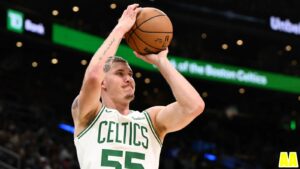
The Boston Celtics have long been known for their rich history and success on the court, but the team is also making strides in building a strong developmental pipeline through their G-League affiliate, the Maine Celtics. Located in Portland, Maine, the team has become a vital part of the Celtics’ organizational structure, providing a platform for young players to develop their skills and potentially make the leap to the NBA.
One of the key benefits of having a G-League affiliate is the ability to develop young players in a more controlled environment. The Maine Celtics provide a space for players to hone their skills, work on their weaknesses, and gain valuable experience playing against other top-level competition. This season, players like JD Davison, a second-round pick in the 2022 NBA draft, have been able to flourish in Maine, averaging over 15 points and 6 assists per game.
The Celtics have also used their G-League affiliate to rehabilitate injured players, allowing them to get back on the court and regain their form in a lower-pressure environment. Players like Marcus Smart, who suffered an ankle injury earlier this season, have been able to use the Maine Celtics as a stepping stone to get back to full strength. This approach has not only helped the players but also given the Celtics a more competitive edge.
In addition to developing young players, the Maine Celtics have also become an important part of the local community. The team has established a strong presence in Portland, with a loyal fan base and a state-of-the-art arena. The Celtics have also been involved in various community outreach programs, including youth basketball clinics and charity events. This commitment to the local community has helped to foster a sense of pride and ownership among fans.
The Celtics’ investment in their G-League affiliate has also paid dividends in terms of scouting and player development. The team has been able to identify and develop talent from around the world, including players like Two-Way contract player, Mfiondu Kabengele. The Maine Celtics have also served as a proving ground for coaches, with several assistants moving on to roles with the Boston Celtics or other NBA teams.
The partnership between the Boston Celtics and the Maine Celtics is a model for other NBA teams to follow. By investing in their G-League affiliate, the Celtics have created a strong developmental pipeline that will continue to pay dividends for years to come. As the NBA continues to evolve, the importance of having a strong G-League affiliate will only continue to grow.
The Maine Celtics have also become a hub for innovation and experimentation. The team has been at the forefront of analytics and sports science, using advanced data and technology to gain a competitive edge. This approach has allowed the Celtics to stay ahead of the curve and make more informed decisions about player development and roster construction.
As the G-League continues to grow in prominence, the Maine Celtics are well-positioned to remain a key part of the Celtics’ organizational structure. With a strong foundation in place, the team is poised to continue developing young talent and making contributions to the Boston Celtics’ success.
The Celtics’ commitment to their G-League affiliate is a testament to the team’s long-term vision and dedication to building a sustainable winning culture. By investing in the Maine Celtics, the team is not only developing players but also building a strong foundation for future success.
In the ever-changing landscape of the NBA, the importance of having a strong developmental pipeline cannot be overstated. The Maine Celtics have become a vital part of the Boston Celtics’ organizational structure, providing a platform for young players to develop their skills and potentially make the leap to the NBA.
The future looks bright for the Maine Celtics and the Boston Celtics. With a strong foundation in place, the team is poised to continue developing young talent and making contributions to the Celtics’ success. As the NBA continues to evolve, the partnership between the Boston Celtics and the Maine Celtics will remain a key part of the team’s long-term vision.
The Maine Celtics have come a long way since their inception in 2019. From humble beginnings to becoming a model for G-League success, the team has established itself as a vital part of the Celtics’ organizational structure. As the team continues to grow and evolve, one thing is certain – the Maine Celtics will remain a key part of the Boston Celtics’ future.
In conclusion, the Boston Celtics’ developmental pipeline in Maine is a model for other NBA teams to follow. By investing in their G-League affiliate, the Celtics have created a strong foundation for future success. With a commitment to innovation, community outreach, and player development, the Maine Celtics are poised to continue making contributions to the Boston Celtics’ success for years to come.
News
JJ Redick reacts to Luka Doncic trade for Anthony Davis
In one of the most jaw-dropping moves of the season, the NBA landscape was rocked by the blockbuster trade involving Luka Dončić and Anthony Davis—a swap that has sent ripples of excitement, disbelief, and heated discussion through the league. Among…
Anthony Davis FULL reaction to trade to Mavericks for Luka Doncic
In a blockbuster move that sent shockwaves through the NBA and left fans reeling, Anthony Davis has been traded to the Dallas Mavericks in exchange for Luka Dončić. In the immediate aftermath of the news, Davis took to the media…
Shaq reacts to Dallas Mavericks wanting Kevin Durant after Luka-AD trade 👀
In the constantly shifting world of the NBA, trade rumors and blockbuster moves are a regular part of the season’s drama. The latest twist has fans buzzing: the Dallas Mavericks have reportedly set their sights on acquiring Kevin Durant in…
Donovan Mitchell FILTHY poster dunk on Kristaps Porzingis 😳
In a game filled with high-intensity moments and jaw-dropping highlights, one play in particular has left fans and analysts buzzing about Donovan Mitchell’s latest display of athleticism. Early in the contest, with the atmosphere already charged by an evenly matched…
Joel Embiid hits go-ahead bucket vs Mavs then chats with Anthony Davis after game
In one of the most thrilling contests of the season, Joel Embiid delivered a clutch performance against the Dallas Mavericks, punctuating the game with a go-ahead bucket that sent the home crowd into a frenzy. The atmosphere in the arena…
D’Angelo Russell game winner as Nets hit two 3’s in 3 seconds to win vs Rockets 😱
In one of the most electrifying moments in recent NBA history, D’Angelo Russell delivered an unforgettable game-winner that left fans and commentators in complete awe. With the Brooklyn Nets locked in a tense battle against the Houston Rockets, the outcome…
End of content
No more pages to load

